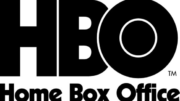DIRECTV receivers had caller ID features, starting in the mid-1990s when caller ID was new. Yet, all new hardware since the mid-2010s has not had this feature. Genie DVRs and clients do not support caller ID at all. There isn’t even a phone jack there.
Here’s something that may surprise you. For years, I’ve consistently heard from of folks who have asked whether or not it will come back. Not just a few people either. They point out that since 2015 DIRECTV is part of AT&T, which started as a phone company. That’s true, but I’m sorry to say, caller ID is probably gone for good. Here’s why.
Receivers don’t need phone lines anymore.
Seems funny to think, but it wasn’t that long ago that a phone line was a requirement for DIRECTV receivers. Without one you couldn’t order pay-per-view, and at one time a lot of service data came over phone lines. Today’s receivers are internet connected so there’s no need for that hardware. Without it, caller ID isn’t possible. When you look at it that way, caller ID was a feature that DIRECTV used to get people to connect their phone lines. Once connected, DIRECTV could get more data from them and get them to buy pay-per-view. Both of those functions are handled over the internet today.
Fewer homes even have “real” landline phones anymore.
It’s fair to say that the landline phone business is pretty stagnant. I’ve seen many new homes built in the last five years that aren’t even wired for it. When there is a landline phone service, it’s not “true” landline — it’s tied to the fiber optics coming into the house from the internet provider.
Not only that, landline phones just aren’t that interesting. I’ll tell you, these days when the landline phone rings at my house and it isn’t a telemarketer or robot, I’m genuinely surprised. I can’t remember the last time I got a personal call on my landline.
Caller ID is much more difficult to calibrate than it used to be.
The way that landline phone service gets to you is potentially very different than it was just a few years ago. It could be coming from a phone company, cable company or cell provider and it could travel over the air, over copper, or over fiber. This creates a lot of different issues with caller ID that honestly, are expensive to solve and that comes into play when you look at low demand for landline phones.
And above all… it’s just not a selling point.
You have to remember that in consumer electronics, there’s always a push to make something cost less while keeping quality high. This means keeping component counts low and manufacturing runs long. DIRECTV is looking for features that truly add value to its products and consumers overwhelmingly say Caller ID doesn’t add value. Look, I get it. There are over 20 million households in the AT&T pay TV world. Even if .1% of people want something, that’s 25,000 people who want it. And that seems like a lot of people. It is a lot of people. But it’s a tiny percentage of the customer base and sometimes in order to move ahead and make money (we are talking about a business here) you have to do what the 99.9% of people want, not what the .1% of people want.
So unfortunately yes, I would imagine moving forward there are going to be 25,000 people or so who really miss caller ID. Are you one of them?
By the way, if you’re interested in upgrading your DIRECTV system, with or without caller ID, check out Solid Signal.





